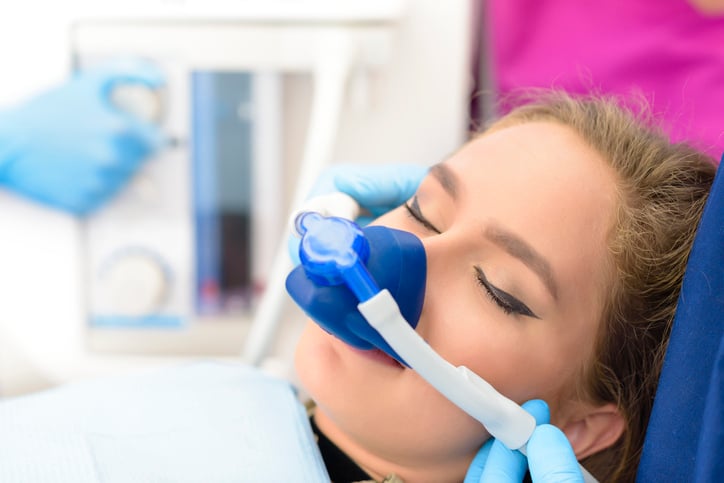
Between 1955 and 2017, 218 people died under general anesthesia for dental treatment, including multiple children. In several cases, aspiration was a contributing factor or even the cause of death. This is a small mortality rate compared to the millions of dental procedures performed annually, and new approaches have lowered that rate substantially. However, no death is an acceptable outcome in dentistry, and aspiration is almost always a preventable tragedy, or at least a treatable one. A few simple strategies can mitigate the risk and ensure safe patient outcomes.
Know Who’s at Risk
Aspiration is more common in patients who undergo emergency anesthesia, likely because they do not fast beforehand, increasing the risk of vomiting.
Other risk factors for aspiration include:
- Light anesthesia, including conscious sedation
- A prior history of aspiration
- Certain respiratory disorders, such as COPD
- Use of a supraglottic airway
- Prolonged anesthesia
- Dental structures that may be knocked loose
- Trauma to the mouth or jaw
- Incorrectly inserted airway for general anesthesia
Although it is important for dental practitioners to identify and assess risk, bear in mind that even people with no risk factors may aspirate. There is no such thing as a patient who is safe from aspiration.
Ask Patients to Fast Whenever Possible
Because emergency anesthesia is a key risk factor for aspiration, having patients fast before dental anesthesia slashes aspiration risk. Except in the case of emergencies, dental care providers should consider delaying procedures long enough for patients to fast for a full 12 hours.
Among patients undergoing emergency anesthesia, aspiration rates are highest when trainees administer anesthesia. In these high-risk cases, dental offices should ensure only skilled providers administer the anesthesia, tend to the patient, and perform the dental procedure.
Monitor Patients for Vomiting and Bleeding
Dental procedures carry a higher risk of bleeding in the mouth and throat than many other surgical procedures. Because of this, it is important to carefully monitor the patient for any bleeding in the throat. Likewise, some dental procedures may activate a patient’s gag reflex, causing them to vomit. Dental assistants and dentists should monitor patients for any indication of vomiting or bleeding.
If you see anything, stop the procedure right away and quickly intervene to reduce the risk of aspiration. The SSCOR SDC Catheter™ (Formerly the SSCOR DuCanto Catheter®) is particularly useful here because it can remove high volumes of aspirate from patients who are actively vomiting or bleeding.
Suction Assisted Laryngoscopy and Airway Decontamination (SALAD) is the technique of choice when a patient vomits under general anesthesia. Your team should pursue training in this and other aspiration prevention procedures on a regular basis.
Be Mindful of Foreign Objects
Patients undergoing dental procedures may have additional dental problems. For example, a patient who needs an extraction might have other damaged teeth. Before surgery, identify the location of crowns, dentures, and any other dental structures that could be knocked loose.
Then observe the patient during the procedure to ensure broken teeth or other damaged oral structures do not cause an aspiration emergency. If a tooth or other oral structure breaks during the procedure, stop operating until the foreign object is completely removed.
Have the Right Equipment Ready
Even very cautious dental offices may occasionally face aspiration events. The right equipment can be life-saving. Not all aspiration events occur while patients are under anesthesia. Sometimes a patient aspirates in recovery, or even in the waiting room. Portable emergency suction ensures you can tend to the patient wherever they are, offering a comprehensive continuum of care. Keep a portable emergency suction machine charged and fully stocked with catheters in an easily accessible location. Also, conduct regular training sessions so that every member of your team knows how to use the machine.
For help selecting the right suction machine for your dental practice, download our free guide, The Ultimate Guide to Purchasing a Portable Emergency Suction Device














